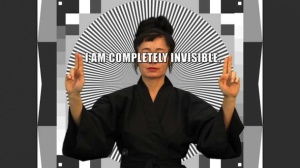56th Venice Biennale 2015
German Pavilion
9 May – 22 November 2015
Curator: Florian Ebner
Artists: Jasmina Metwaly und Philip Rizk, Olaf Nicolai, Hito Steyerl, Tobias Zielony
Exhibiton Concept
Meditation on the material and political nature of images in the contemporary digital world
From as early as the 1980s, photography and video art have found their place in the German Pavilion, side by side with painting, sculpture and installation: the works of Bernd and Hilla Becher, Thomas Ruff, Candida Höfer, Katharina Sieverding and Rosemarie Trockel – all of them protagonists in the vibrant art scene at the Düsseldorfer Akademie in the late 20th century – were followed by the actions and films of Christoph Schlingensief and Romuald Karmakar, along with the documentary approaches of the Indian artist Dayanita Singh and the South African photographer Santu Mofokeng.
Thus, nothing needs to be undertaken to highlight the significance of photography in today’s art market; it is more a question of drawing attention to reflections on the changed meaning of contemporary images in artistic discourse. And no place could be more prominent for this than the German Pavilion. We have been living in a digitalised and globalised world for some time – a world of images. Following the digital turn, there are indications that an algorithmic turn is imminent. Photographs are no longer mere recordings, but products of continuous recalculation and optimisation; they seem to be on the verge of being cut off from visible reality. How can the photographic element of images be understood today, an element that once provided direct evidence of the origination of the images? What is new about these images? And how can we create a fitting symbol for them in space?
With its basilica-like layout, high walls and apse, the interior of the German Pavilion takes on a sacral form, almost like a stage. This architectural structure is especially suited to expansive sculpture, installations or large panel painting – an extremely difficult space for small formats or projected images. The challenge is therefore to create a space/media dispositif that does justice to both today’s images and the given format of the building.
Starting out from four aspects and ideas – migrating images, participation of the actors, light as an elementary image carrier and the roof as a place of freedom – a contextual and formal force field will be established, from which this pavilion will derive its tension. Classical questions of representation – the balance of power between subject and object, the old asymmetry between photographer and model – pose themselves in a new way, in the light of the digital images. A contemporary understanding of the photographic element as a central position of documentary work is open for discussion. All works of art will be created especially for the German Pavilion, and shown there for the first time.
Migrating Images
The filmic and photographic works of Tobias Zielony, Hito Steyerl and Jasmina Metwaly/Philip Rizk examine migrating and volatile images in very different ways. Migration is an existential condition of the modern human being; in a figurative sense, this is also true of the digital image – one can even say that it is one of its most important qualities. Themigrant image (J.T. Demos) asks how documentary practices react to the effects of globalisation (and transform themselves).
Through the mass distribution of images in social networks, the question of what our shared images actually represent fades more and more into the background; the performative act of producing and showing images seems to be of greater relevance. Who tells these stories of transitory existences, and in what way? On whose authority, with whose voice are they communicated, and who is intended to receive them?
Participation of the actors
Forms of participation available via the internet, for example involvement in political processes, detailed information and education, have many faces. With this in mind, the contributions developed for the Biennale will discuss the meaning of the concept of participation in terms of its significance in politics and the media, taking the dialectic aspect of these processes into consideration: the emergence – but also the disappearance (and becoming invisible) – of the human subject in contemporary images. The works of art set this phenomenon in contrast with the self-confident and self-empowered actor in multiple forms and figures, from documentary or fictive appearances to physical or virtual configurations.
Light as an elementary image carrier
Light is the element that will shape the content-related and formal design of the pavilion. At first glance, in view of the fact that the digital element is in the foreground, this old protagonist in the field of art may seem too emphatically chosen. However, the transfer, coding/decoding and worldwide distribution of data today consists of nothing other than the reduction and transformation of information into light signals – as will become particularly apparent in the work of Hito Steyerl.
The roof as another place
Olaf Nicolai will turn his attention to the building as a whole, both inside and out. This idea includes envisaging the space as a stage for the visual works of art. In his artistic-sculptural and architectural intervention it will not be possible to avoid addressing the historical aspect, working both with and against it, and reacting to the tectonic, vertical alignment of the building. In contrast to previous interventions in the pavilion, which focused primarily on the floor – some projects and installations were almost reminiscent of archaeological work – the roof will be an integral part of Olaf Nicolai’s design. This specific place will also to some extent play a role in the contributions of the other invited artists. Moreover, it can be understood as a heterotopia, as a place where freedom is conceivable.
Image: Hito Steyerl, How Not To Be Seen. A Fucking Didactic Educational .MOV File, 2013. Courtesy ifa


